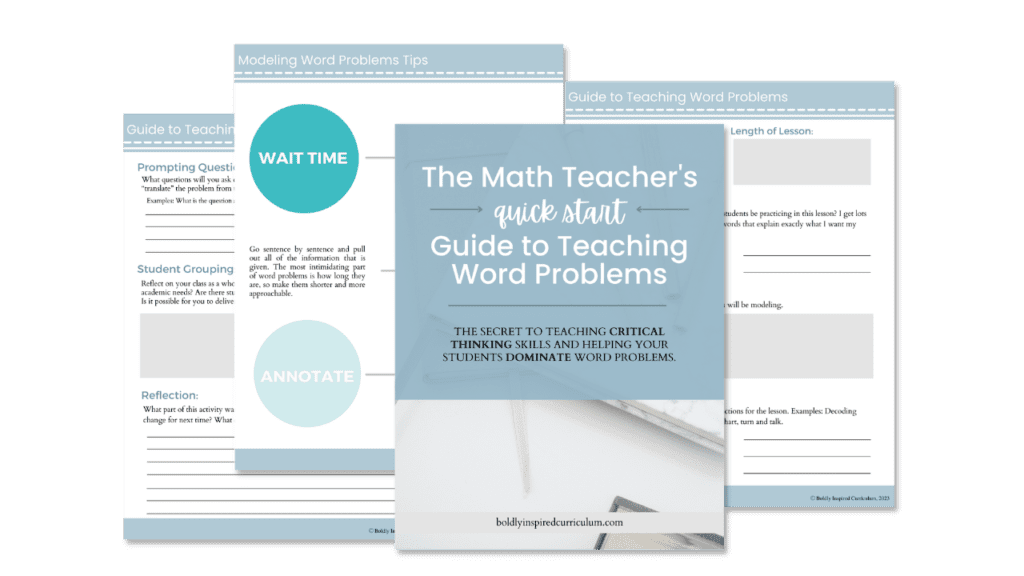What is the first reaction when you ask your students to solve a word problem? Are they overwhelmed with excitement? If I had to guess, they are probably not…
Let’s dive in to what caused them to hate word problems so much and why it’s stuck with them over the years.
Table of Contents
ToggleLooking to learn more about teaching word problems?
Reason #1: Word problems are "too hard"
The most common response I get from my students when they say they can’t solve word problems is that they are too hard. In reality, word problems aren’t too hard for them to solve. They are just different from what they are used to.
Word problems can’t always be solved by using a formula. Your students actually have to understand the concept and be able to apply it with the information given. So often students haven’t developed the strategies for thinking critically and aren’t even sure where to start.
Reason #2: There is more emphasis on the right answer than the process
Let’s face it. Most students want a quick and easy way to get to the answer. With constant access to the internet and “life hacks” dominating social media, who wouldn’t want an easy solution to every problem?
The amount of effort it takes to work through a process and find the solution is much more significant than just substituting numbers into a formula. The task of getting students to buy in to the importance of problem solving in math can sometimes be the most challenging part of teaching word problems.
Reason #3: Word problems give more room for error
I’ve said it before and I’ll say it again. Math anxiety is real and can start to develop in the early years of elementary school. The fear of getting the answer wrong, especially in front classmates, deters so many students from wanting to answer questions aloud and problem solving.
The engrained idea that getting the answer wrong in math class is bad and makes a student “not good” at math has perpetuated this anxiety even further. When in reality, making mistakes and overcoming them makes students stronger learners and critical thinkers.
3 strategies to ease word problem anxiety
1. Normalize making mistakes
When students truly understand that mistakes are part of the learning process, they start to accept and work through the “struggle”.
2. Model problem solving skills
Many students see a word problem and have no idea where to start. Give them strategies for figuring out difficult problems. Check out this blog post for teaching problem solving skills!
3. Collaboration
Let your students work together! Knowing that they are not alone can make a huge difference in their perseverance.



